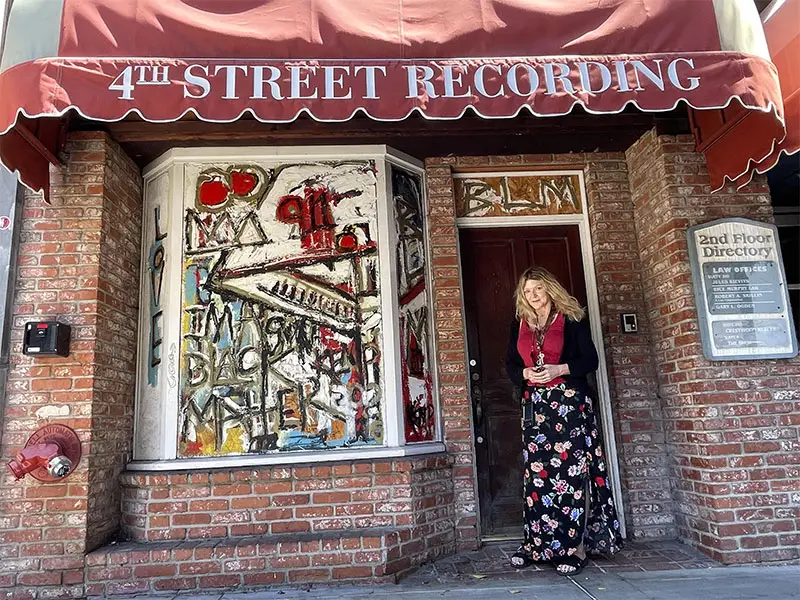The History of 4th Street Recording
In its first incarnation, this studio was called Sound Solutions, built in 1978 by David Epstein with loving attention to detail and sound design features for a world where music was made without computers. The walls and floor of the tracking room are floating in sand, the ceiling is a big rolling wave, and the place is encased in natural wood panels alternating with bass traps so that there are no parallel surfaces. The studio’s client list included Little Richard, Stanley Clarke, George Clinton, and the Beach Boys, who recorded “Kokomo” here.
In 1989, Kathleen Wirt and a partner bought the studio and renamed it 4th Street Recording. “I’ve recorded in studios all over the world,” said Gary Myrick, an early client, “and I am sick of studios that feel like doctor’s offices, bus stations, or spaceships.” Kathleen agreed and put velvet on the control room walls, then began replacing the utilitarian furniture with antiques and custom designed pieces. Artists loved the cozy vibe, saying it made them feel comfortable and creative.
Through tireless scouting and some well-placed spec deals, over 40 bands scored record deals out of the studio, and major careers were launched, including Fiona Apple, Incubus, Hoobastank, and The Neighbourhood.
Kathleen became the sole owner in 2001 and began assembling the team of gifted young engineers and producers who comprise the 4th Street family today. In 2013, producer Sejo Navajas rewired the control room and installed his 1973 3224 API console. We’ve added modern essentials like Pro Tools and an Avion headphone system, but if you didn’t see the computer screen, you might think you had stepped back into 1978. It’s our “pirate spaceship,” and there are very few studios like it left.

